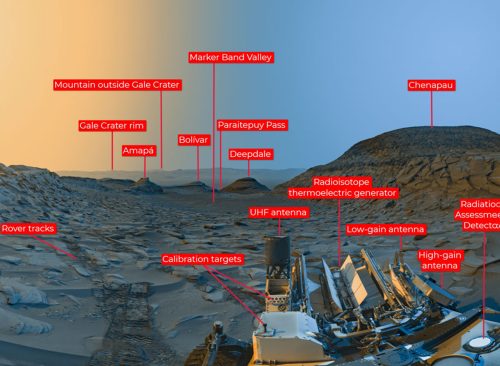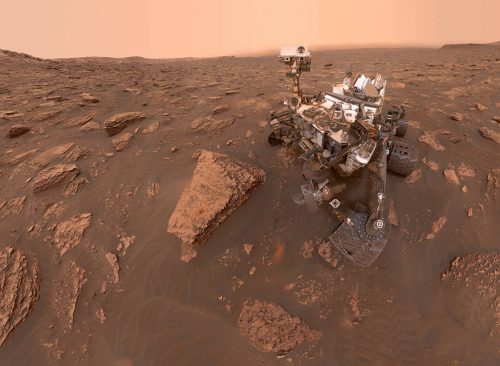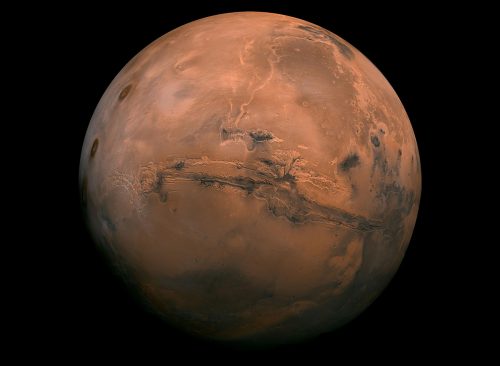NASA’s Curiosity Rover Reveals Photos of Mars at Different Times of the Day
An illuminating view.

NASA’s Curiosity rover captured stunning images of Mars that allowed scientists to see what the red planet looks like at various times of day. The rover captured the images with black-and-white cameras on April 8, NASA said in a news release. The rover took photos in the morning and afternoon and sent them back to researchers on Earth, who did some impressive editing to convey the view from the planet’s surface. It’s both totally different and not that dissimilar from what we see on Earth.
1
An Illuminating View

Once NASA scientists received the photos, they turned them into panoramic images and added color. This created what NASA called a “postcard,” illustrating the difference between the times the photos were taken. The photos showed researchers how the sun and shadows move on Mars, the agency said.
“Anyone who’s been to a national park knows the scene looks different in the morning than it does in the afternoon,” said Curiosity engineer Doug Ellison of NASA’s Jet Propulsion Laboratory in Southern California, who planned and processed the images in a news release. “Capturing two times of day provides dark shadows because the lighting is coming in from the left and the right, like you might have on a stage—but instead of stage lights, we’re relying on the sun,” he added.
2
Numerous Landmarks Visible

The panorama shows several Mars landmarks, including Marker Band Valley, where Curiosity once found evidence of a potential lake, and two hills named Bolivar and Deepdale. It also shows Gale Crater, which Curiosity is currently exploring.
The photos were taken on a clear day, so a long vista is visible, including a mountain 54 miles from the edge of Gale Crater.
3
Body of Rover Also Seen

The photos were taken during Mars’ winter, NASA said. During that season, shadows are deeper and darker because dust levels in the Martian atmosphere are at their lowest. “Mars’ shadows get sharper and deeper when there’s low dust and softer when there’s lots of dust,” said Ellison. The body of Curiosity, which has been on Mars since 2012, makes a cameo appearance in the photo, which also shows the rover’s tracks across the planet’s dusty surface.
Also visible is Curiosity’s Radiation Assessment Detector, or RAD, instrument, which is helping scientists learn how to protect the first astronauts sent to Mars from radiation on the planet’s surface.
4
Another Rover Made Headlines

NASA’s unmanned exploration of Mars made headlines last November when studies reported that the rover Perseverance found evidence that water may have existed on the Red Planet sometime in the past and that rocks on the surface are full of organic molecules, the basis of life on Earth.
One of Perseverance’s objectives is to determine what happened on Mars that turned it from wet and warm to frigid and uninhabitable.
5
When Will Humans Explore Mars?

President Obama set a goal of landing humans on Mars by 2033, and NASA is proceeding along that timeline. As a first step, NASA plans to send astronauts back to the moon for the first time since 1972. Next year, the Artemis II will launch four astronauts in the Orion spacecraft on an expedition around the moon. In 2025, Artemis III will send the first woman and the first person of color to land on the moon.
“Moving forward is really to Mars,” Howard Hu, the head of the Orion lunar spacecraft program, told the BBC last November. “That is a bigger stepping stone, a two-year journey, so it’s going to be really important to learn beyond our Earth orbit.”














